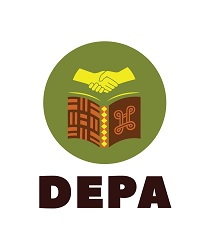Phase 1
Different arts and humanities methods have been used in each of the Proof of Concept countries. The following paragraphs provide broad descriptions of the methods selected overall.
Storytelling
Storytelling is being used as the primary overarching method throughout this project; it is deeply contextual, allowing the teller to convey the political, social and cultural nuances that surround their situation. Storytelling does not require advanced technology or a precondition of literacy, important in contexts such as refugee settlements, where literacy rates are low. It can be a significant medium through which to drive a collaborative process of constructing values of empathy and tolerance and building on local experiences of peace and conflict (del Boccio 2010).
Fourth, it offers opportunities to go beyond existing peacebuilding procedures based on rational thought (usually male and western)) and instead enables historically silenced voices of women and others who have been marginalised to be heard on their terms.
Storytelling has variants across Africa with each country having its’ own distinctive traditions and mixtures of how stories are best told. Stories often require a mix of methods, narrative, gestures, imagery, performance and body movements. Each will also require its’ own mix of the size of the appropriate groups who are involved and engage, methods of analysis and the form of recording. These combinations will be crucial to the development and deployment of the method.
Complimentary arts-based methods
Complimentary arts-based methods have been used to generate qualitative data. The different methods have provided and continue to provide the means for participants to express the contextual and cultural dynamics of peacebuilding. These methods allow participants to construct the data as narrative storytelling intended to convey the values, knowledge and understandings that underpin what drives peaceful relations within their communities. Given the gendered nature of conflict and displacement each project has sought to ensure a gender balance among respondents across all methods.
Due to the decolonial nature of this project, country teams have selected from several arts methods that are being purposefully chosen, in consultation with participant groups. Determining factors have included familiarity of the community with the art form and value as a form of expression; relevance of the particular method as a mode of storytelling and access to local artists. The five arts-methods include:
- Dance can be a stand-alone practice or a part of a bigger and a holistic art performance (e.g. ritual theatre) and serve as a non-violent means of communicating one’s feelings as well as connecting with others. Dance can also be culturally relevant and reflect the historical experiences of the communities. However, dance sometimes can be exclusionary for disabled people but also in some cultures dance, particularly for women, may be seen as a notorious practice that could damage the integrity of the family within the community. Therefore, any dance practice should receive an extensive amount of input from the communities and engage with participants in a meaningful way.
- Participatory music projects are able to encourage participation by those who feel marginalised by high politics. This is why it has been viewed as part and parcel of peacebuilding ambitions (see Urbain, 2007). The production of sound can tell us about the ways in which the cultural heritage of an individual or a collective is mobilised as a way of communicating their needs and visions of the present on this basis. By involving participants not only in the performance but also the creation of music and sound, we expect to be able to reach out particularly to a young set of participants who may be able to articulate their visions via this affective dimension of engagement.
- Participatory photography has been used for action research extensively in a range of post-conflict settings such as Northern Ireland, Rwanda and Uganda as a way of making sense of, and supporting, peacebuilding (Baú, 2015). Peace photography itself is a budding field of study, Photographs are a powerful aid to storytelling; providing a visual way to communicate worldviews and understandings that transcend language to make story-listening more accessible. The project will specifically employ PhotoVoice method developed by Wang & Burgess (1992) as a form of empowerment for disenfranchised and discriminated communities to give voice to promote social action for positive transformation.
- Theatre has long played a role in contexts of peacebuilding and conflict transformation, both as a way of representing traumatic and difficult circumstances (the theatre performances in besieged Sarajevo, for instance, became famous in this context) and as a way of encouraging participation by marginalised community members. The participatory staging of marginalised stories allows for the participants to flexibly experiment with their plots and imagine alternative processes and outcomes, specifically in contexts where they may feel deprived of their agency. Since the participation in such theatre-based activities is strictly voluntary and political messages can be couched as part of a “role” rather than personal identity, this makes theatre a particularly valuable tool in engaging those who feel disconnected from the sphere of high politics and allows for the safe experimentation with different political visions.
- Videography is another form of storytelling that has been used in a wide variety of peacebuilding contexts. The use of video as a way of conveying stories has the power to contribute to long-term changes in perception and behaviour in post-conflict environments, making it a valuable conflict resolution mechanism. Videos have been produced to convey the life stories of children who have been caught up in war, giving them a voice, and conveying those voices to a larger audience.

